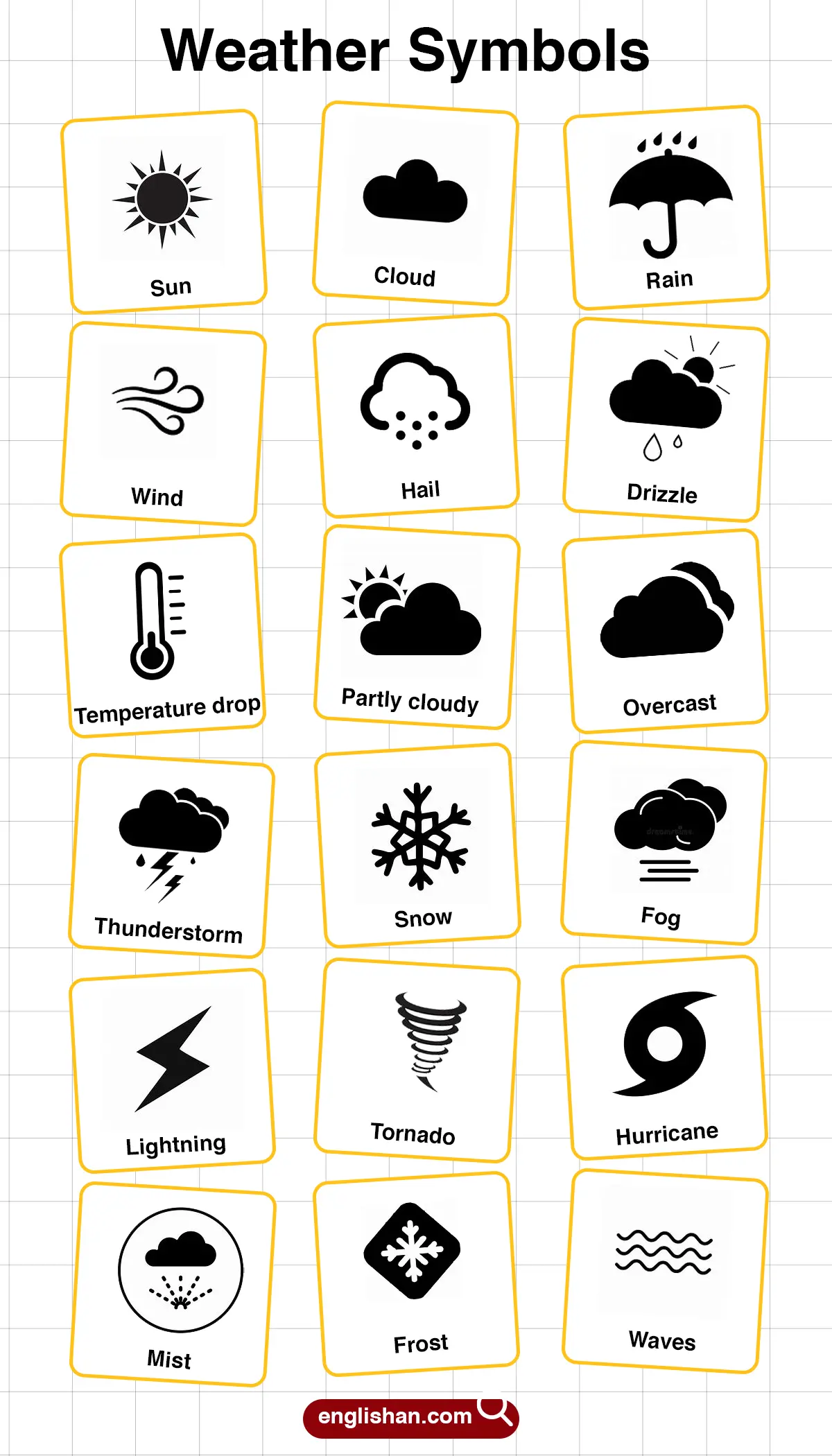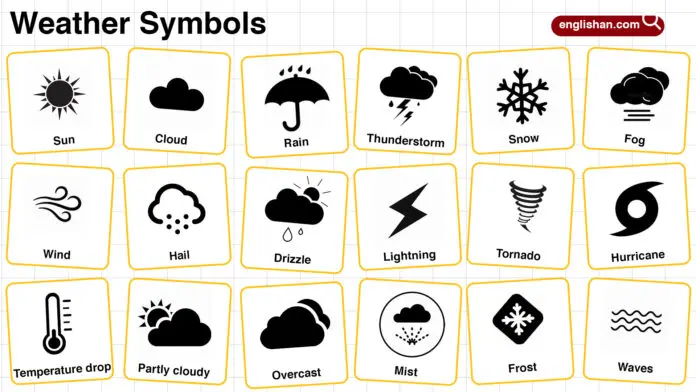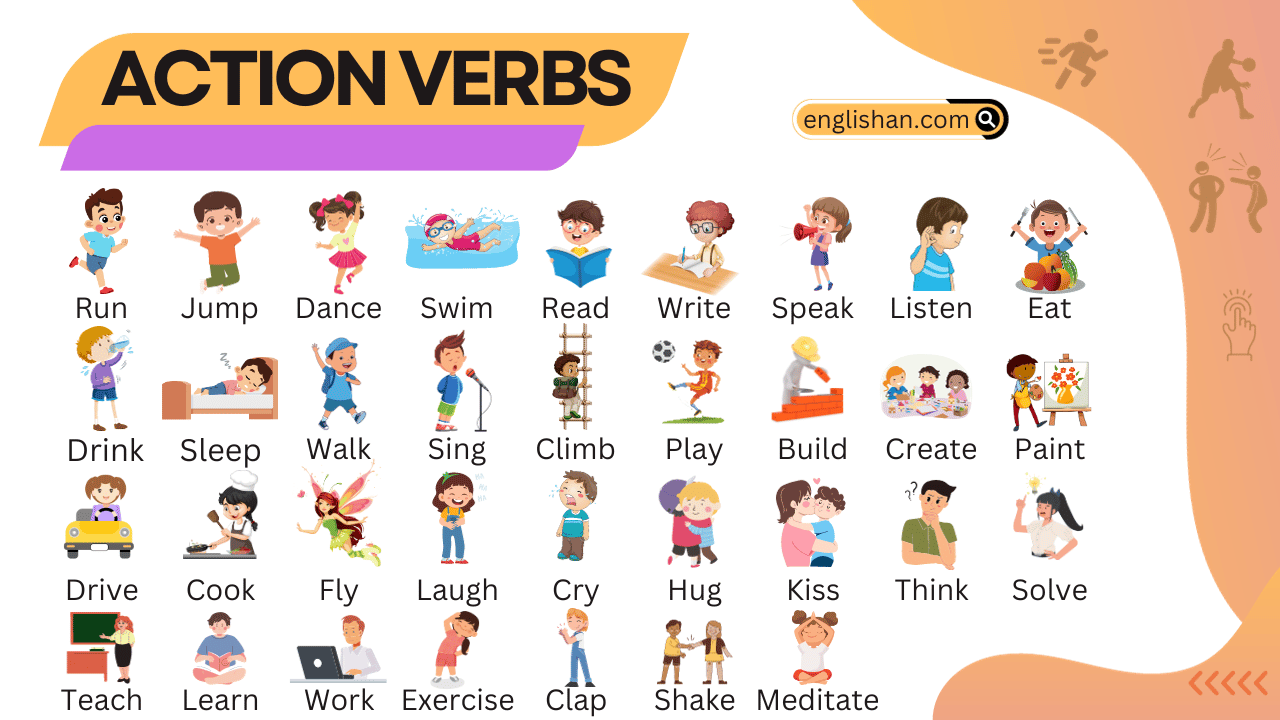Contents
Understanding weather symbols is essential for reading forecasts and knowing what to expect in different conditions. These symbols represent different weather elements, such as sunshine, rain, storms, and temperature changes, helping people interpret forecasts easily. In this blog post, we will learn the names of various weather symbols and their meanings through pictures, making it easier for learners to recognize and remember them.
Expand your vocabulary with more visual learning by visiting our Picture Vocabulary category.
List of Weather Symbols
Common Weather Conditions
Weather conditions affect daily life, travel, and activities. Understanding these symbols helps in reading forecasts accurately.
Sun
Represents bright and clear weather, typically indicating warm temperatures and no precipitation.
Cloud
Indicates overcast or partly cloudy conditions, where the sky is covered by clouds of varying density.
Rain
Depicts falling water droplets, symbolizing wet conditions, often leading to cooler temperatures.
Thunderstorm
Shows stormy weather with lightning and thunder, often accompanied by heavy rain and strong winds.
Snow
Represents frozen precipitation that occurs in cold temperatures, covering the ground with white layers.
Fog
Indicates reduced visibility due to water droplets suspended in the air, common in humid or cold conditions.
Mist
Depicts very fine water droplets reducing visibility but not as dense as fog.
Frost
Indicates icy deposits on surfaces due to freezing temperatures, commonly seen in winter.

Severe Weather Events
Severe weather conditions can cause disruptions and require safety precautions.
Tornado
Indicates a rotating column of air with destructive winds, usually forming during severe thunderstorms.
Hurricane
Represents a powerful tropical storm with strong winds and heavy rain, often affecting coastal areas.
Hail
Shows ice pellets falling from the sky, usually during severe thunderstorms.
Lightning
Depicts electrical discharges during storms, often causing bright flashes in the sky.
Temperature and Atmospheric Changes
Temperature changes impact daily comfort, agriculture, and climate patterns.
Temperature Rise
Shows an increase in temperature, typically represented by an upward arrow.
Temperature Drop
Indicates a decrease in temperature, often symbolized by a downward arrow.
High Pressure
Indicates stable weather conditions, usually associated with clear skies and calm winds.
Low Pressure
Represents unstable weather, often bringing rain, storms, and strong winds.
Weather Fronts
Weather fronts signify transitions between different air masses, influencing weather patterns.
Cold Front
Shows a shift where cooler air replaces warmer air, often bringing rain and storms.
Warm Front
Indicates a transition where warm air moves in, often causing light rain and temperature increases.
Stationary Front
Represents a boundary where two air masses meet but do not move significantly, leading to prolonged weather conditions.
Occluded Front
Depicts a mix of warm and cold fronts, often causing complex weather patterns with rain or snow.
Additional Weather Symbols
These symbols represent various natural phenomena affecting weather conditions.
Partly Cloudy
Represents a mix of sun and clouds, indicating moderate weather conditions.
Overcast
Indicates a fully cloud-covered sky, often leading to cooler and dull conditions.
Drizzle
Represents light and continuous rain, smaller than standard raindrops but creating damp conditions.
Waves
Depicts oceanic movements influenced by wind and weather conditions.
Rainbow
Represents a colorful arc in the sky, usually appearing after rainfall when sunlight refracts through moisture.
Interesting Facts About Weather Symbols
Weather symbols have been used for centuries to communicate weather patterns clearly. Here are some interesting facts:
- The earliest weather symbols were used in ancient Greece and China to track atmospheric changes.
- Meteorologists use over 100 different symbols to represent global weather patterns.
- A red sun symbol often indicates extreme heat or drought conditions.
- Some symbols, like lightning bolts, can predict severe weather several days in advance.
- In aviation, pilots rely on fog and wind symbols for safe takeoffs and landings.
FAQs
Weather symbols represent various atmospheric conditions such as sun, rain, snow, and storms. They help people understand forecasts quickly and prepare for weather changes.
Meteorologists and weather agencies use a set of internationally recognized symbols to maintain consistency in weather forecasting and reporting.
Certain weather symbols may have slight variations depending on the country or agency creating them, though most symbols remain universally recognizable.
You May Also Like






